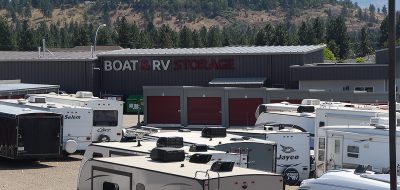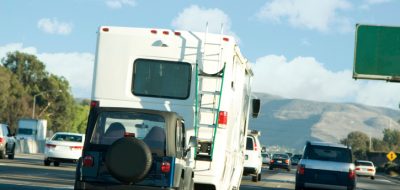 Last week we looked at some of the features and benefits that may be derived from having a tag axle coach. This week we’ll examine the differences of various tags and learn that not all tags are built equally.
Last week we looked at some of the features and benefits that may be derived from having a tag axle coach. This week we’ll examine the differences of various tags and learn that not all tags are built equally.
One of the first things that is apparent, is the two totally different appearances between say, a Monaco Roadmaster tag and a Freightliner tag. Or a Spartan and a Prevost. Both the Roadmaster and the Spartan chassis have a matched look. That is, the deep dish like tag axle wheel is identical to that of the drive axle ahead. A view of a Freightliner or Prevost chassis reveals two different wheel center profiles. The tag essentially looks more like the front wheel, than the drive. I personally, far prefer the matched rear wheels.
 So why do some chassis builders make them different? There are probably at least two different reasons depending on the design or market. The Prevost, Newell, and MCI conversions, for example, had, or do, offer auto steerable tags. These eliminate undue tire wear and help to reduce the turning radius by simulating a shorter wheelbase during tight maneuvers. I believe this steering gear requires additional axle width room which is partially captured by the reverse mounted wheel.
So why do some chassis builders make them different? There are probably at least two different reasons depending on the design or market. The Prevost, Newell, and MCI conversions, for example, had, or do, offer auto steerable tags. These eliminate undue tire wear and help to reduce the turning radius by simulating a shorter wheelbase during tight maneuvers. I believe this steering gear requires additional axle width room which is partially captured by the reverse mounted wheel.
In the case of chassis’s, like that of the Freightliner, it may be done as a cost savings. The reverse rim, similar to the front wheel, can load the wheel bearing at, or near, the dead center of the wheel. That is, the bearing carrying that wheel would be directly in-line with the center of the tire tread. However, when the single wheel of a tag axle is mounted with the deep dish facing out, similar to the duals on the drive, except with no inner wheel, the bearing is well inboard. This, due to the lever affect, increases the bearing load substantially, requiring a larger and stronger bearing and possibly a more robust frame mount.
Now there is a difference in the manner that they are controlled when turning a tight radius. We already discussed that some of the conversion coach chassis’s employ automatic following tags. The others use one of the follow two methods. One type uses an air lift of the tag, which actually lifts the tires from the road surface. The other, though fairly similar in nature, unloads the air, leaving not much more than the weight of the tag assembly on the road.
The steering type tags are self managing and generally do not require operator input. Both the lifting and the unloading type do require some operator input in most cases. The tag in both cases can be lifted/unloaded by pushing a designated button. This however, can only be activated at very slow speeds, 8 M.P.H. or so and will also automatically deactivate if sped up to that speed during employment. On many, if not all, it can be set to automatically lift/unload when reverse gear is selected. These types of tags have both the advantages earlier mentioned with one added feature over the steerable type. They can be raised or unloaded, which transfers more weight to the driving axle. This can be a great aid when increased traction is needed for slick or poor gripping ground surfaces.
So which type is the best, if one had a choice. For me, I would probably go for the lift/unload type so that it had the two matching rear wheel profiles. This may also reduce maintenance and possibly future alignment issues. Now, having said that, I’ld be happy to go the other way if someone were to give me a Newell or Prevost. Just so you know, I am flexible.
With Some of the Choices – Lug_Nut – Peter Mercer





Lug_Nut
Larry, I’m glad you enjoyed the article. Thank you for your interest and comment.
Larry
Diesel tag class A’s are out side my retirement income, but I have seen many on my fulltime travels, so I found your article very interesting. Good work.
Lug_Nut
I will keep my eyes open for a Prevost conversion or a Newell looking for a home for you. Yes, you can go back to any articles by any writer and score them. However, you can only score an article once. Thanks for your interest and input.
John
I ‘ve been so involved in the content of your articles, I haven’t even noticed the rating section. Is it possible to rate previous articles or is there a time limit?
If by chance you do come across someone who is looking for a free home for a second Prevost or Newell, I’d consider getting my arm twisted. I’ve taken in a rescue dog so why not a Prevost or Newell!
Keep the great articles coming!
Lug_Nut
Hi John, You are of like mind on the matched wheel profiles, as I am. Hey, if I have to take a Prevost or Newell (new of course) free, well, I’m certainly willing to take one for the team. Thanks for your input. All the writers here really appreciate the interactive communication, please do it often. Again, thanks John.
P.S. Don’t forget to rate the articles. At the bottom of each you can rate them 1 to 5 stars.
John
Hi Lug_Nut,
I also prefer the lift tag over a steerable tag due to the wear and additional maintenance consideration with fewer moving parts and, the matched wheels look much nicer. I think there is more advantage with the lift over steerable tag. When a tag is raised though, it increases weight on the driving axle but decreases weight on the steering axle which will make turning the wheel a bit easier in tight spots.
Your flexibility regarding a Prevost or Newell is admirable.